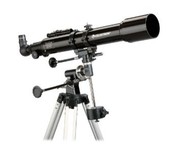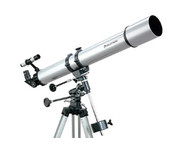Products reviews
Celestron PowerSeeker 70 EQ 21037 (35 x 70mm) Telescope$100.00 to $119.00
Tags:celestron, powerseeker, 70, eq, 21037, 35, x, 70mm, telescope, | Celestron PowerSeeker 80 EQ (225 x 80mm) Telescope$107.00 to $160.00
Tags:celestron, powerseeker, 80, eq, 225, x, 80mm, telescope, |
Celestron NexStar 6 SE (354 x 55.88mm) Telescope
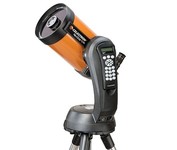
Whether you are a seasoned astronomer looking for a portable scope with advanced features, or just starting your astronomy adventure and looking for an easy way to enjoy the night sky, a NexStar SE will help you take a closer look.
Celestron AstroMaster 114 AZ (50 x 114mm) Telescope
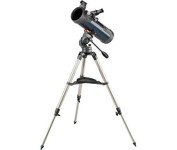
Designed for the novice user, the Celestron® AstroMaster™ 114 AZ telescope features a alt-azimuth mount with a convenient pan handle with built-in clutch for easy targeting and smooth motion perfect for watching whales, spotting birds, viewing nature or checking out your favorite star or planet. The compact, portable design with ample optical performance will excite any newcomer to the world of amateur astronomy.Minimize
Bushnell NorthStar 78-8831 (525 x 76mm) Telescope
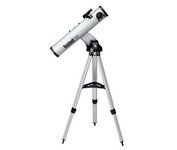
A "talking" high power reflector telescope. Up to 525x magnification and 3-inch reflector mirror. With the touch of a button this talking telescope describes the wonders of the night sky in a real human voice - an interactive and educational way to explore the universe. "Goto" Computerized tracking technology. Red Dot LED finderscope. Remote hand-held control module. Camera adaptable. Quick release tripod. Kinematic mount. Accessory tray. 20,000 Object Onboard Starfinding Computer. 1.25" Format Eyepieces. Barlow Lens. A great starting telescope!Minimize
Tasco 49070800 Spacestation(r) 70az Refractor Telescope (600 x 70mm)
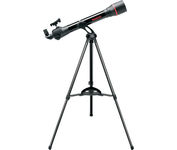
With its 70mm lens and all the bells and whistles, the Tasco Spacestation 70AZ is ideal for both the beginner and amateur astronomer.
